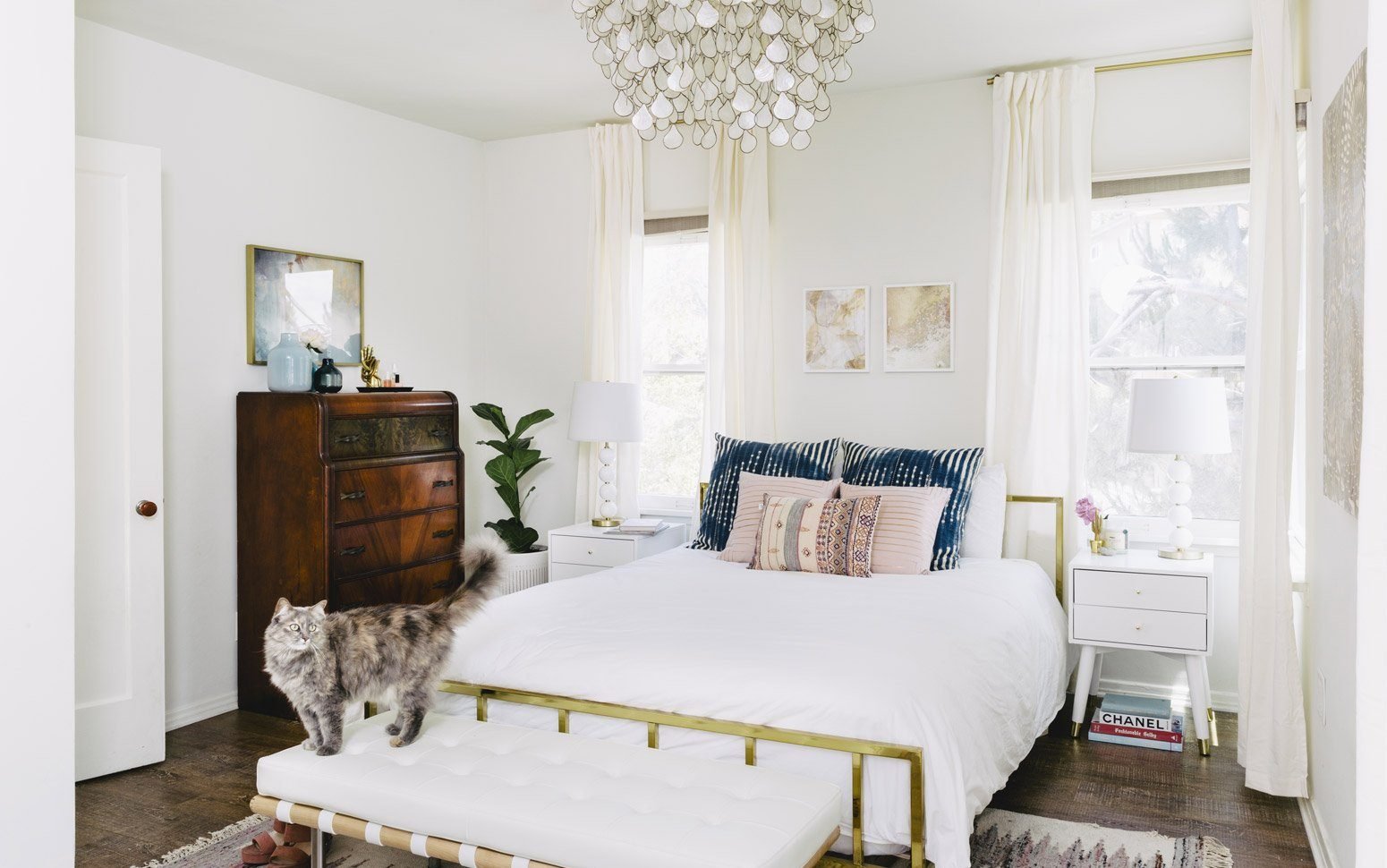When you live in a small space, you become accustomed to constant innovation. Designing for a small space can be challenging, we know. It’s why we’ve devoted many of our recent blog posts to outlining how to make the most of small space living and studio apartments. But beware: Not every small-space hack is worth the hype, says Havenly interior designer Heather Goerzen.
“There are times our conventional training convinces us ‘we have to have this,’ but we could actually get along quite well—and even better—without it,” Heather says of the so-called hack to hang on to furniture for future use in a larger space. “It might require some tough decisions, but saying goodbye to pieces to free up some wall space will ultimately result in an environment that feels calmer, cozier, and more inviting,” she shares.
Below, Heather breaks down five commonly cited “hacks”—two get her stamp of approval while the other three are “best to avoid,” she says.
“When it comes to small spaces, the No. 1 tip is embracing vertical shelving for added storage and visual interest,” Heather says. She admits that you’ve probably heard this tip “ad nauseum”—but it’s true. Heather suggests taking it one step further by adding a high perimeter bookshelf that spans all sides of your room.
“This shelving twist adds a sense of novelty and creativity to your space. You can house your collection of books and style with sculptural decor accents and mementos that have meaning to you,” she says. “It’s a surprising storage solution that packs a major stylish punch and brings a touch of intellectual whimsy to your space.”
For best results, Heather recommends installing the shelf at about 9 inches to one foot below the ceiling. Her other suggestion is simple: “Be prepared for the compliments!”
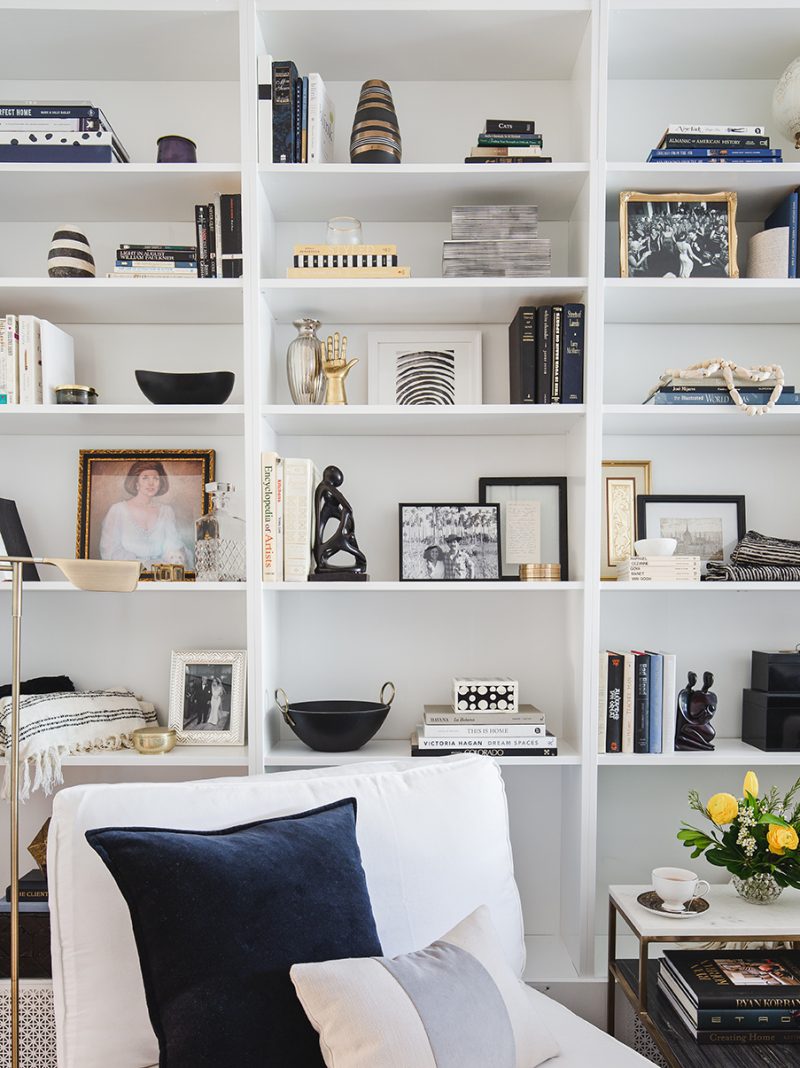
“It’s true that if you’re tight on space, the last thing you want to do is block natural light or views, but this can lead folks to skip out on curtains altogether,” Heather says. Big mistake. Big. Huge.
“Curtains are like mascara for a designer. They make a space feel put together and add dimension,” she says. The time-tested designer secret? “Hang them wide and high—meaning hanging the curtain rod 4 to 6 inches above the window frame and extend out on either side of the window so your curtains are just dusting the sides of the frame,” Heather says. This way, you’re not blocking any part of the window or the much-desired light it offers.
As for length, curtains should meet the floor. This creates more visual height in a small space and draws the eye upward. “No ankle crops here,” Heather says.
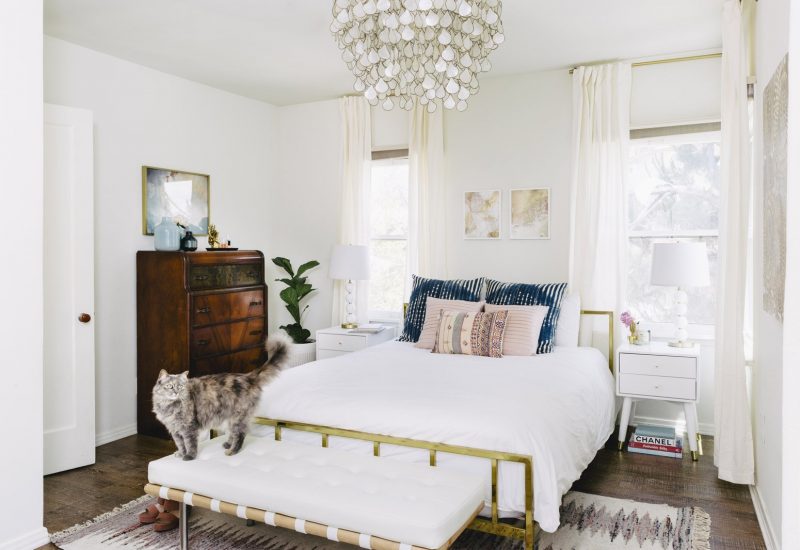
“It might seem counterintuitive, but larger furniture can help maximize small spaces, whereas more diminutive pieces can feel lost and incomplete,” Heather says.
One of the best examples of this is the rug. A large area rug will anchor an entire seating area, making you feel more at home than a smaller option that barely spans the sofa.
Heather suggests sizing up your artwork, too. Go grand with an oversized, statement piece of art versus a collection of miniature frames. “But as you incorporate large-scale pieces, pare back the little extras to allow some breathing room,” she says. “You want to establish distinct focal points for the eye to rest so your space feels intentional, collected, and calm.”
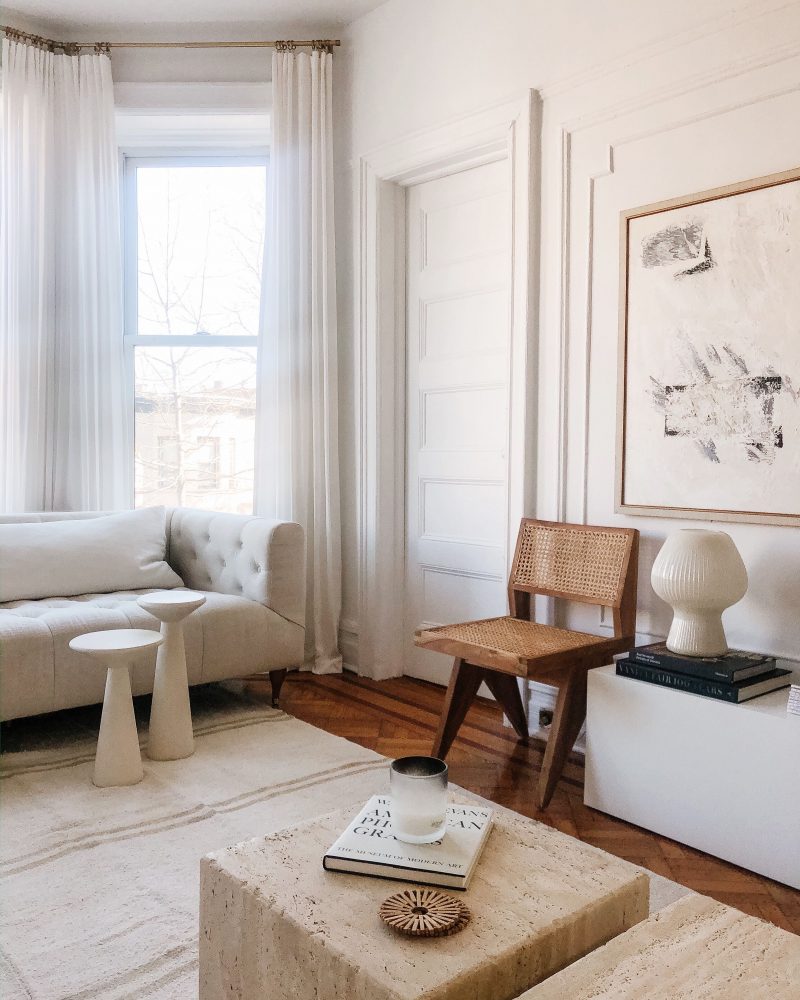
To contain loose odds and ends, we’re big fans of storage baskets. But small spaces run the risk of being “over-basketed,” Heather says.
“Baskets are meant to be functional styling objects and leveraged smartly in a corner, beneath a console or bench, or on a shelf. Like any decor element, there is such a thing as too many,” she says.
You don’t want a basket on every single wall in a room or to fill up an entire bookshelf. Rather, work in storage baskets asymmetrically and strategically. Perhaps you have a woven floor basket next to the media console to catch throws and another on the bottom row on your bookshelf. Then stop. “That’s likely enough for the living room,” Heather shares.
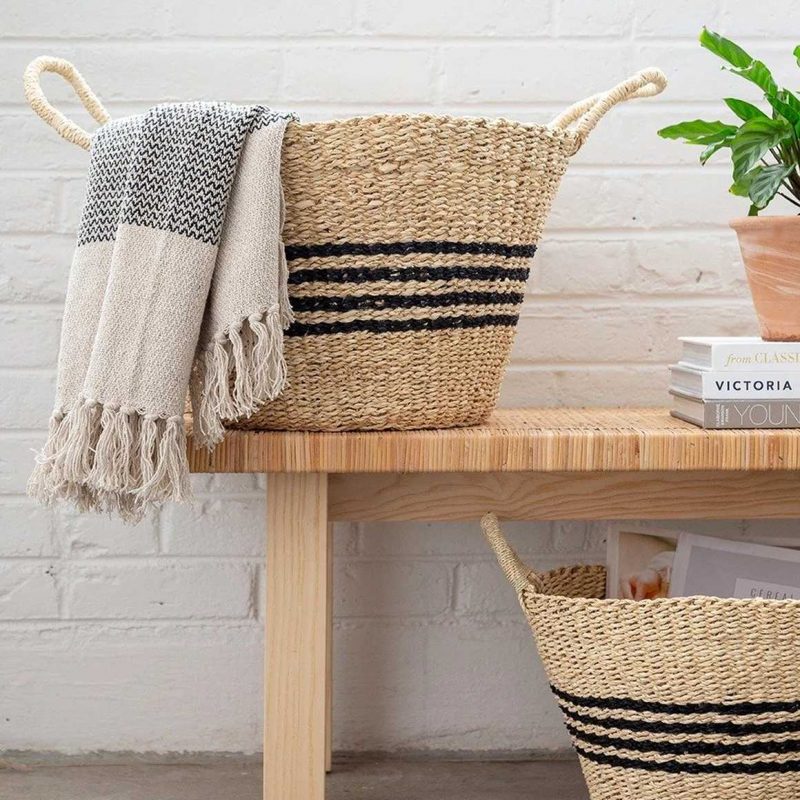
There’s an understandable temptation to keep all of the furniture and decor you’ve ever owned, but this can overwhelm your space.
“While you might really want a desk, your limited living room says otherwise. Forcing a desk into a corner right next to the sofa will leave you feeling cramped. The best thing to do is edit back,” Heather says. “In this example, forgo the desk in the living room and either come up with a creative small-scale solution in the bedroom or embrace working via a laptop at the dining table or sofa,” she says.
To create a small space with balanced breathing room, get started with our design style quiz.

